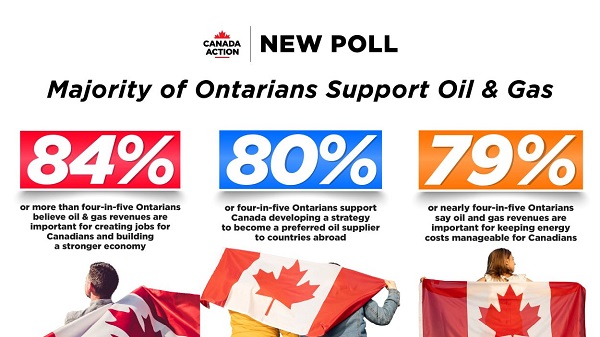Frontier Centre for Public Policy
To Truly Help Indigenous Communities Prosper, We Must Put the Economic Horse Before the Political Cart

From the Frontier Centre for Public Policy
Conservative leader Pierre Poilievre has surprised a lot of people by placing a real emphasis on his party’s relationship with Indigenous peoples. Not only has he recruited high-profile Indigenous politicians like Ellis Ross and Chief Billy Morin to be candidates, but he’s even addressed the annual meeting of the Assembly of First Nations.
As he thinks about how best to translate these efforts of engagement and outreach into a practical policy agenda, he ought to prioritize economic reconciliation over certain political reforms. This is a balance that the Trudeau government has failed to abide by.
In November 2021, Prime Minister Justin Trudeau issued a statement on the 25th anniversary of the final report of the Royal Commission on Aboriginal Peoples (RCAP)—a massive five-volume report containing 440 recommendations covering most areas of Canada’s Indigenous life.
The prime minister proudly stated his government followed through on one RCAP recommendation: In 2017, it established the Department of Crown-Indigenous Relations and North Affairs and the Department of Indigenous Services as separate departments.
Yet his government neglected—like others before it—a much more significant recommendation: the creation of economically viable and eventually self-sufficient Indigenous communities.
The result is that most Indigenous governments in Canada—even self-governing modern treaty governments—are no closer to achieving RCAP’s vision of self-sufficient Indigenous governments.
It reflects a consistent problem in the discourse about advancing progress towards the overall goal of reconciliation. Indigenous activists and scholars too often put the politics of self-government before economics.
They advocate for independent political institutions, but without a realistic economic plan, these institutions will not be free of federal economic paternalism.
They fail to put the political cart behind the economic horse.
Over 20 years ago, Dene leader Stephen Kakfwi told an interviewer that First Nations seeking self-government must first consider their community’s financial viability. No government in the world, he said, provided free housing, free education, and free government. Kakfwi wisely observed that this would not create self-reliant individuals, families, and communities.
So, what will ensure a path toward economic viability for Indigenous communities that leave the Indian Act? Long-term data on Indigenous communities provides answers.
The National Indigenous Economic Development Board (NIEDB)’s flagship Aboriginal Economic Benchmarking Report found a recurring positive correlation between greater control over land and resources and higher socio-economic outcomes.
The NIEDB’s research reveals Canada’s modern treaty process provides the greatest Indigenous economic freedom because it provides the most significant control over land and resources. Modern treaties are land claims agreements signed since the 1970s between the Crown and First Nations, in which Indigenous parties abandon reserves and federal oversight. They involve wide-reaching control over lands and resources and often self-governing institutions.
These agreements provide a favourable investment climate and create greater potential for economic development and growth by instilling certainty over rights to land and resources.
Consider two case studies, one in the U.S. and one in Canada, to understand this fully.
First is the 1971 Alaska Native Claims Settlement Act (ANCSA). The second is the 1984 Inuvialuit Final Agreement (IFA). Both agreements involved Northern Indigenous groups extinguishing rights and title in exchange for cash and full control over lands and resources. Both agreements created arm’s length corporate structures to make sound business and investment decisions for the community.
Through ANCSA, U.S. Congress provided Alaska Natives with a total cash settlement of $962.5 million and title to surface and sub-surface to 40 million acres.
ANCSA turned the Alaska Native communities into for-profit regional and village corporations with legal obligations to generate profits for their shareholders.
Alaska Natives would not allow these entities to become regular corporations. They banned selling and trading shares on the open market. They adopted ancestral restrictions on shareholder eligibility to prevent takeovers.
Alaska Native communities used their revenues to establish a fiscal relationship between all corporations that included resource revenue sharing.
As a result, ANCSA created a significant socio-economic change within the Alaska Native population and shifted from subsistence-based activities toward a more middle-class existence over a few decades.
The corporation’s economic power rested on natural resource wealth (oil and timber). However, wise investment of settlement monies and resource revenues into other businesses and ventures ensures future economic viability.
Now, turning to Canada.
The Inuvialuit of the Western Arctic signed the Inuvialuit Final Agreement (IFA) with the federal government. The IFA created two institutions, the Inuvialuit Regional Corporation (IRC) and the Inuvialuit Game Council to oversee wildlife. The IRC corporate structure encompasses six community corporations.
The Inuvialuit Development Corporation (IDC) was the IRC’s business unit. The IDC invested settlement monies into business ventures within and outside the settlement region, focusing on creating Inuvialuit jobs. The IDC created over 20 subsidiary businesses and joint ventures in seven major business sectors. They invested in construction, manufacturing, environmental services, transportation, tourism and hospitality, real estate, and petroleum servicing.
The Inuvialuit Investment Corporation (IIC) is the IRC’s second subsidiary. IIC protects Inuvialuit funds, earns a five percent long-term return, and manages Inuvialuit corporation investment funds. Inuvialuit Social Development Fund—the non-income generating part of the IRC—provides Inuvialuit housing, health, welfare, education, and traditional language services.
The IFA created significant socio-economic change within the Inuvialuit Settlement Region, paralleling changes within Alaska Native society after the ANCSA. The two communities differ because the promised Mackenzie Valley Pipeline project never materialized for the Inuvialuit while the Trans Alaskan Pipeline did.
One wonders how the Mackenzie Valley Pipeline could have economically improved the condition of the Inuvialuit.
So, can one conclude Indigenous communities cannot achieve economic viability without substantial natural resources? Not necessarily. Indigenous communities without substantial natural resources tend to adopt two other economic development strategies: 1) expanding land holdings, including valuable urban lands; and 2) developing high-value-added, reserve-based businesses and niche industries.
Studies by the Fraser Institute and the C.D. Howe Institute reveal that many First Nations in Canada have access to their own source revenues. A 2016 Fraser study found at least 100 First Nations at that time had access to their own source revenues that exceeded government transfers.
To replicate such successes, Ottawa must fundamentally re-orient its Indigenous policy.
The federal government—in working with First Nations seeking freedom from the Indian Act and reserve system—must develop realistic economic viability plans before signing agreements. Ottawa must place economic success and viability at the centre of its Indigenous policy approach. New agreements must include for-profit corporate structures. Ottawa must provide Indigenous communities with the fiscal tools they need to succeed, including self-taxation powers and the ability to easily expand their land base for economic purposes.
Finally, Ottawa must recognize that future Indigenous economic viability hinges on the future of Canada’s resource economy. Governments must abandon green transition policies that run counter to future Indigenous viability.
First published here.
Joseph Quesnel is a Senior Research fellow with the Frontier Centre for Public Policy
Business
The Real Reason Canada’s Health Care System Is Failing

From the Frontier Centre for Public Policy
By Conrad Eder
Conrad Eder supports universal health care, but not Canada’s broken version. Despite massive spending, Canadians face brutal wait times. He argues it’s time to allow private options, as other countries do, without abandoning universality.
It’s not about money. It’s about the rules shaping how Canada’s health care system works
Canada’s health care system isn’t failing because it lacks funding or public support. It’s failing because governments have tied it to restrictive rules that block private medical options used in other developed countries to deliver timely care.
Canada spends close to $400 billion a year on health care, placing it among the highest-spending countries in the Organization for Economic Co-operation and Development (OECD). Yet the system continues to struggle with some of the longest waits for care, the fewest doctors per capita and among the lowest numbers of hospital beds in the OECD. This is despite decades of spending increases, including growth of 4.5 per cent in 2023 and 5.7 per cent in 2024, according to estimates from the Canadian Institute for Health Information.
Canadians are losing confidence that government spending is the solution. In fact, many don’t even think it’s making a difference.
And who could blame them? Median health care wait times reached 30 weeks in 2024, up from 27.7 weeks in 2023, which was up from 27.4 weeks in 2022, according to annual surveys by the Fraser Institute.
Nevertheless, politicians continue to tout our universal health care system as a source of national pride and, according to national surveys, 74 per cent of Canadians agree. Yet only 56 per cent are satisfied with it. This gap reveals that while Canadians value universal health care in principle, they are frustrated with it in practice.
But it isn’t universal health care that’s the problem; it’s Canada’s uniquely restrictive version of it. In most provinces, laws restrict physicians from working simultaneously in public and private systems and prohibit private insurance for medically necessary services covered by medicare, constraints that do not exist in most other universal health care systems.
The United Kingdom, France, Germany and the Netherlands all maintain universal health care systems. Like Canada, they guarantee comprehensive insurance coverage for essential health care services. Yet they achieve better access to care than Canada, with patients seeing doctors sooner and benefiting from shorter surgical wait times.
In Germany, there are both public and private hospitals. In France, universal insurance covers procedures whether patients receive them in public hospitals or private clinics. In the Netherlands, all health insurance is private, with companies competing for customers while coverage remains guaranteed. In the United Kingdom, doctors working in public hospitals are allowed to maintain private practices.
All of these countries preserved their commitment to universal health care while allowing private alternatives to expand choice, absorb demand and deliver better access to care for everyone.
Only 26 per cent of Canadians can get same-day or next-day appointments with their family doctor, compared to 54 per cent of Dutch and 47 per cent of English patients. When specialist care is needed, 61 per cent of Canadians wait more than a month, compared to 25 per cent of Germans. For elective surgery, 90 per cent of French patients undergo procedures within four months, compared to 62 per cent of Canadians.
If other nations can deliver timely access to care while preserving universal coverage, so can Canada. Two changes, inspired by our peers, would preserve universal coverage and improve access for all.
First, allow physicians to provide services to patients in both public and private settings. This flexibility incentivizes doctors to maximize the time they spend providing patient care, expanding service capacity and reducing wait times for all patients. Those in the public system benefit from increased physician availability, as private options absorb demand that would otherwise strain public resources.
Second, permit private insurance for medically necessary services. This would allow Canadians to obtain coverage for private medical services, giving patients an affordable way to access health care options that best suit their needs. Private insurance would enable Canadians to customize their health coverage, empowering patients and supporting a more responsive health care system.
These proposals may seem radical to Canadians. They are not. They are standard practice everywhere else. And across the OECD, they coexist with universal health care. They can do the same in Canada.
Alberta has taken an important first step by allowing some physicians to work simultaneously in public and private settings through its new dual-practice model. More Canadian provinces should follow Alberta’s lead and go one step further by removing legislative barriers that prohibit private health insurance for medically necessary services. Private insurance is the natural complement to dual practice, transforming private health care from an exclusive luxury into a viable option for Canadian families.
Canadians take pride in their health care system. That pride should inspire reform, not prevent it. Canada’s health care crisis is real. It’s a crisis of self-imposed constraints preventing our universal system from functioning at the level Canadians deserve.
Policymakers can, and should, preserve universal health care in this country. But maintaining it will require a willingness to learn from those who have built systems that deliver universality and timely access to care, something Canada’s current system does not.
Conrad Eder is a policy analyst at the Frontier Centre for Public Policy.
Business
Ottawa Is Still Dodging The China Interference Threat

From the Frontier Centre for Public Policy
By Lee Harding
Alarming claims out of P.E.I. point to deep foreign interference, and the federal government keeps stalling. Why?
Explosive new allegations of Chinese interference in Prince Edward Island show Canada’s institutions may already be compromised and Ottawa has been slow to respond.
The revelations came out in August in a book entitled “Canada Under Siege: How PEI Became a Forward Operating Base for the Chinese Communist Party.” It was co-authored by former national director of the RCMP’s proceeds of crime program Garry Clement, who conducted an investigation with CSIS intelligence officer Michel Juneau-Katsuya.
In a press conference in Ottawa on Oct. 8, Clement referred to millions of dollars in cash transactions, suspicious land transfers and a network of corporations that resembled organized crime structures. Taken together, these details point to a vulnerability in Canada’s immigration and financial systems that appears far deeper than most Canadians have been told.
P.E.I.’s Provincial Nominee Program allows provinces to recommend immigrants for permanent residence based on local economic needs. It seems the program was exploited by wealthy applicants linked to Beijing to gain permanent residence in exchange for investments that often never materialized. It was all part of “money laundering, corruption, and elite capture at the highest levels.”
Hundreds of thousands of dollars came in crisp hundred-dollar bills on given weekends, amounting to millions over time. A monastery called Blessed Wisdom had set up a network of “corporations, land transfers, land flips, and citizens being paid under the table, cash for residences and property,” as was often done by organized crime.
Clement even called the Chinese government “the largest transnational organized crime group in the history of the world.” If true, the allegation raises an obvious question: how much of this activity has gone unnoticed or unchallenged by Canadian authorities, and why?
Dean Baxendale, CEO of the China Democracy Fund and Optimum Publishing International, published the book after five years of investigations.
“We followed the money, we followed the networks, and we followed the silence,” Baxendale said. “What we found were clear signs of elite capture, failed oversight and infiltration of Canadian institutions and political parties at the municipal, provincial and federal levels by actors aligned with the Chinese Communist Party’s United Front Work Department, the Ministry of State Security. In some cases, political donations have come from members of organized crime groups in our country and have certainly influenced political decision making over the years.”
For readers unfamiliar with them, the United Front Work Department is a Chinese Communist Party organization responsible for influence operations abroad, while the Ministry of State Security is China’s main civilian intelligence agency. Their involvement underscores the gravity of the allegations.
It is a troubling picture. Perhaps the reason Canada seems less and less like a democracy is that it has been compromised by foreign actors. And that same compromise appears to be hindering concrete actions in response.
One example Baxendale highlighted involved a PEI hotel. “We explore how a PEI hotel housed over 500 Chinese nationals, all allegedly trying to reclaim their $25,000 residency deposits, but who used a single hotel as their home address. The owner was charged by the CBSA, only to have the trial shut down by the federal government itself,” he said. The case became a key test of whether Canadian authorities were willing to pursue foreign interference through the courts.
The press conference came 476 days after Bill C-70 was passed to address foreign interference. The bill included the creation of Canada’s first foreign agent registry. Former MP Kevin Vuong rightly asked why the registry had not been authorized by cabinet. The delay raises doubts about Ottawa’s willingness to confront the problem directly.
“Why? What’s the reason for the delay?” Vuong asked.
Macdonald-Laurier Institute foreign policy director Christopher Coates called the revelations “beyond concerning” and warned, “The failures to adequately address our national security challenges threaten Canada’s relations with allies, impacting economic security and national prosperity.”
Former solicitor general of Canada and Prince Edward Island MP Wayne Easter called for a national inquiry into Beijing’s interference operations.
“There’s only one real way to get to the bottom of what is happening, and that would be a federal public inquiry,” Easter said. “We need a federal public inquiry that can subpoena witnesses, can trace bank accounts, can bring in people internationally, to get to the bottom of this issue.”
Baxendale called for “transparency, national scrutiny, and most of all for Canadians to wake up to the subtle siege under way.” This includes implementing a foreign influence transparency commissioner and a federal registry of beneficial owners.
If corruption runs as deeply as alleged, who will have the political will to properly respond? It will take more whistleblowers, changes in government and an insistent public to bring accountability. Without sustained pressure, the system that allowed these failures may also prevent their correction.
Lee Harding is a research fellow for the Frontier Centre for Public Policy.
-

 Alberta1 day ago
Alberta1 day agoThe Canadian Energy Centre’s biggest stories of 2025
-

 Business1 day ago
Business1 day agoResurfaced Video Shows How Somali Scammers Used Day Care Centers To Scam State
-

 Addictions8 hours ago
Addictions8 hours agoCoffee, Nicotine, and the Politics of Acceptable Addiction
-

 Bruce Dowbiggin2 days ago
Bruce Dowbiggin2 days agoIn Contentious Canada Reality Is Still Six Degrees Of Hockey
-

 Business2 days ago
Business2 days agoCanada needs serious tax cuts in 2026
-

 Business1 day ago
Business1 day agoOttawa Is Still Dodging The China Interference Threat
-

 Business1 day ago
Business1 day agoMinneapolis day care filmed empty suddenly fills with kids
-

 Business1 day ago
Business1 day agoDisclosures reveal Minnesota politician’s husband’s companies surged thousands-fold amid Somali fraud crisis









